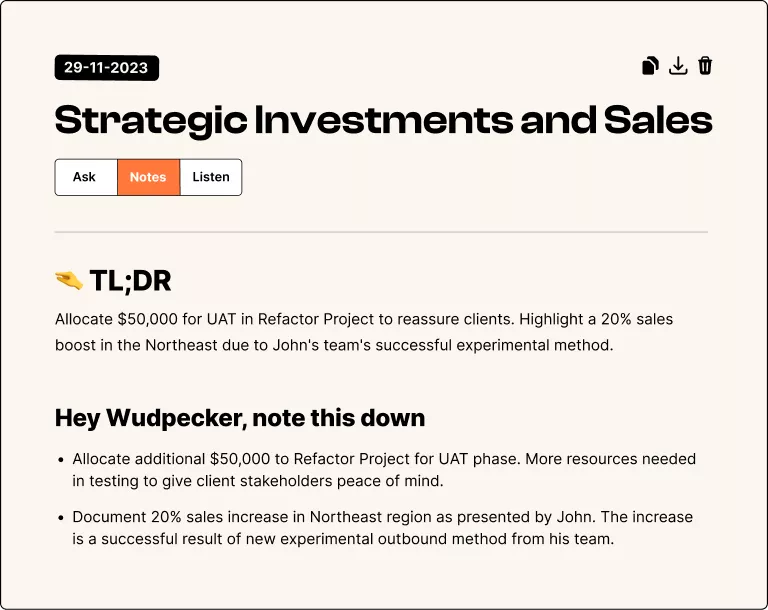Feature adoption is about users consistently using product features to achieve their goals. In B2B, adoption is slower, involving teams, training, and ROI analysis. B2C adoption is faster, focusing on simplicity and user experience.
Key Differences Between B2B and B2C Feature Adoption:
- Adoption Pace: B2B is slower due to team coordination; B2C is faster with individual users.
- Training Needs: B2B requires in-depth training; B2C relies on quick, intuitive tutorials.
- Focus: B2B prioritizes ROI and system integration; B2C emphasizes ease of use.
Quick Comparison:
| Criteria | B2B | B2C |
|---|---|---|
| Adoption Pace | Slower, requires coordination | Faster, individual-driven |
| Training | Live sessions, detailed documentation | In-app tutorials, self-guided |
| Focus | ROI, efficiency, integration | Simplicity, user experience |
To succeed, B2B adoption strategies should include tailored onboarding, internal product champions, and data-driven insights.
The Feature Adoption Funnel: How to measure feature usage ...
B2B Feature Adoption Challenges
Launching new features in B2B solutions often comes with hurdles, especially when integrating with existing systems. Common challenges include:
- API compatibility problems: Ensuring the new feature works seamlessly with current APIs.
- Data migration issues: Transferring data without errors or loss.
- Security protocol alignment: Meeting stringent security standards.
- Custom workflow adjustments: Adapting to unique operational processes.
Tackling these challenges requires careful planning, thorough testing, and continuous feedback to ensure the new features fit smoothly into established workflows.
B2B and B2C Feature Adoption Differences
Let’s dive deeper into how feature adoption differs between B2B and B2C settings, highlighting the unique approaches and challenges each faces.
Adoption Pace and User Goals
In B2B environments, adopting new features is often a long process that can take months. This slower pace is due to the need for team coordination, system integration, and careful organizational planning. In contrast, B2C users tend to embrace updates quickly, trying out new features as soon as they become available.
Training Requirements
B2B platforms usually require detailed training programs to help teams understand and use new features. These programs often include live sessions, workshops, comprehensive documentation, and follow-up training. On the other hand, B2C platforms prioritize ease of use, offering quick, in-app tutorials and automated guides to help users get started instantly.
ROI Focus
For B2B, feature adoption is heavily influenced by ROI considerations. Companies often conduct cost-benefit analyses and run pilot programs to ensure new features improve efficiency, integrate well with existing systems, and support long-term goals. This careful evaluation helps organizations make informed decisions about their technology investments.
sbb-itb-6285ddb
B2B Feature Adoption Best Practices
Custom Onboarding Programs
Create onboarding programs tailored to your team's structure, workflows, and goals.
Key elements to include:
- Role-specific feature paths that align with specific job responsibilities
- Milestone tracking to ensure users master core features
- Interactive documentation, such as video tutorials, knowledge bases, and quick reference guides
- Fast-response support to quickly resolve onboarding challenges
Internal Product Champions
Once onboarding is customized, designate internal champions to connect your product team with users, gather feedback, and encourage adoption.
Key components of a strong champion program:
- Choose champions from various departments and roles for broader representation
- Offer beta access to new features before release
- Set up regular feedback loops through monthly meetings
- Acknowledge and reward champions for successful efforts
Analytics-Driven Insights
Support your onboarding and champion initiatives with data insights. Tools like Userlens activity heatmaps can reveal how features are being adopted across teams.
Important metrics to monitor:
- Feature engagement rates across different user groups
- Time-to-value for newly implemented features
- User activation trends within organizations
- Feature adoption speed compared to set goals
How these insights help:
- Highlight features that may need extra support
- Spot where adoption slows down
- Identify groups that need additional training
- Assess how effective your onboarding efforts are
Measuring B2B Feature Adoption
Key Performance Metrics
To understand how features are being adopted, monitor engagement across different levels within an organization using these metrics:
-
Organization-Level Metrics:
- Account Activation Rate: Percentage of active licensed seats.
- Time-to-First-Value: Average time it takes for teams to benefit from new features.
- Feature Penetration: Percentage of departments using specific features.
-
User-Level Metrics:
- DAU to MAU Ratio: Compares daily active users to monthly active users to track feature usage frequency.
- Feature Interaction Depth: Measures how often users engage with advanced functions.
- Session Duration: Tracks the time users spend interacting with new features.
-
ROI-Focused Metrics:
- Productivity Gains: Measures reductions in task completion times.
- Error Reduction: Tracks decreases in support tickets related to feature use.
- Cost Savings: Assesses efficiency improvements in workflows.
These metrics provide a foundation for deeper understanding through qualitative feedback.
User Feedback Collection
Gather feedback from multiple channels to assess user experience and adoption levels:
-
Direct Feedback:
- Hold quarterly business reviews with key stakeholders.
- Conduct monthly check-ins with product champions.
- Use feature-specific in-app surveys to gather user opinions.
-
Indirect Feedback:
- Examine trends in support tickets and resolution times.
- Study feature usage heatmaps to identify patterns.
- Analyze user session recordings for deeper insights.
Visual tools like Userlens activity dots can highlight adoption trends, pinpointing both challenges and successes.
Industry Performance Standards
External benchmarks are a helpful way to refine goals and measure progress. While targets depend on factors like company size, feature complexity, and integration needs, comparing trends across similar organizations can guide improvement efforts and set achievable objectives.
Conclusion
To maintain momentum and ensure success, it’s crucial to regularly assess and refine your approach. Adopting features in the B2B space requires strategies tailored to its unique challenges. The involvement of multiple stakeholders, the need for extensive training, and a focus on organization-wide ROI make the process more intricate.
Effective adoption hinges on personalized onboarding and leveraging data insights. Tools like Userlens help track adoption trends using activity dots and usage heatmaps, uncovering obstacles and areas for improvement. Striking the right balance between technical complexity and user experience while aligning with organizational priorities is essential.
Related Blog Posts



.svg)



















.svg)
